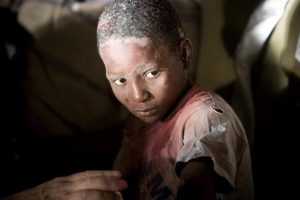Jan. 12, 2010 was just a normal day for many. For the people of Haiti, it was a day that will be remembered for years to come. In mere minutes, a 7.0 earthquake struck the economically poorest country in the western hemisphere. Destruction ravished the country, demolishing Port-au-Prince (the capital city) and destroying countless homes, businesses, and families. While the death toll is yet to be finalized, the remaining Haitian government has estimated that 150,000 bodies have been buried.

With major ports and airplane landing strips either destroyed or unmanageable, aid reached the country at an incredibly slow rate. News crews from all over the world were able to traverse the country, located in Hispanola, before doctors, food, and rescue crews. Even when crews arrived the damage seemed too severe: the dead outnumbered the living and the injured traversed the streets. Makeshift hospitals were created in abandoned buildings and alleyways and medical methods reverted to the bare minimum. Water and food quickly ran out, even for workers, as millions worldwide watched the destruction from their living rooms.
As one of the poorest countries in the western hemisphere, Haiti has been disturbed by major problems for many years. Political unrest, health care worries, and the occasional natural disaster have tormented the French Creole people who live in Haiti. Originally known as Saint-Dominque, the country was known for its French culture and abundance of sugarcane and economical success in the early 1700’s. However, after a slave revolt in 1791 and the subsequent renaming to “Haiti”, corruption and human right abuses began to plague the country as political security remained unfound. Although things had started to look up for the extremely unsettled people of Haiti, many feared that continue disappointment was around the corner.
The 7.0 magnitude earthquake was no exception. After the initial damage, a reported 33 aftershocks ran across the country, varying from 5.0 to 6.1. The Richter scale, used to measure seismic activities, is the normal method of determining earthquake strength. With a 7.0-7.9 earthquake occurring usually only once every 18 years, the earthquake in Haiti will become infamous in this generation and the next. The United States has not experienced an earthquake of this magnitude in nearly eight years.
Amongst the thousands of dead civilians in Haiti are several key political figures. The Archbishop of Port-Au-Prince Monsignor Joseph Serge Miot, Justice Minister Paul Denis, and Missions Chief Hedi Annabi are among the deceased. Opposition leader Michel Gaillard’s body was also found amongst the Haitian rubble. The deaths of prominent leaders will only make the recovery process in Haiti that much more difficult, as looting, distress, and political upheaval continue to run rampant.
According to reports, 3 million Haitians were directly affected by the earthquake and its aftershocks. With a third of its total population in jeopardy, many fear the country of Haiti will have to be rebuilt from the bottom up. A CNN reporter spoke on the matter, stating, “In 3 minutes, the country of Haiti was propelled back nearly 100 years into the past. It will take years to pull them back to the 21st century, and that will only be with the help of the world around them.”
Despite the sheer disaster and torment facing the people of Haiti, relief and moments of faith have also swarmed across the country. Although traumatic pictures have surfaced across the internet, many pictures have also surfaced as proof of the strength of the Haitian people. Young children smiling, women holding up their hands to the skies as aid come, and survivors being pulled from rubble unharmed are amongst the damage, lending hope that better days are to come.
CNN’s Anderson Cooper lamented about the disaster, saying “This will soon just become another tragic story in history. People are just going to stop watching. People will forget.” The outpour of support for the crippled nation says otherwise. Guided by George Clooney the Hope for Haiti musical telethon, which aired on almost all network broadcasts on Jan. 22, raised over 57 million dollars in aid. Even as some rescue workers from around the globe pull out of Haiti, hundreds of others are waiting to be sent. Despite the usual temperament of the news media to “forget” stories once past their prime, the devastation and destruction in Haiti will remain in the thoughts and prayers of many long after coverage stops.







